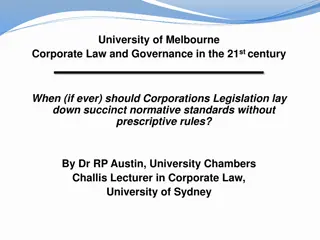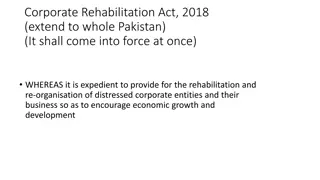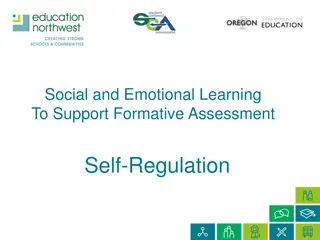Exploring Business Regulation and Corporate Conduct: Research Insights in BRCC Project
Delve into the interplay between business regulation and corporate conduct with a focus on pharmaceuticals and private healthcare sectors. Explore key research problems, such as environmental impacts, regulatory safeguards, incentives to healthcare professionals, and bio-medical waste management practices. Uncover challenges and potential solutions in promoting responsible business practices.
- Business Regulation
- Corporate Conduct
- Research Methodology
- Pharmaceutical Industry
- Healthcare Sector
Download Presentation

Please find below an Image/Link to download the presentation.
The content on the website is provided AS IS for your information and personal use only. It may not be sold, licensed, or shared on other websites without obtaining consent from the author. Download presentation by click this link. If you encounter any issues during the download, it is possible that the publisher has removed the file from their server.
E N D
Presentation Transcript
EXPLORING THE INTERPLAY BETWEEN BUSINESS REGULATION & CORPORATE CONDUCT (BRCC) Rijit Sengupta Jaipur, 13thApril 2012
1. INTRODUCTION TO RESEARCH METHODOLOGY BRCC Research
Research Outline (BRCC Project) 3 Definition of Corporate Conduct National Voluntary Guidelines on Social, Environmental & Economic Responsibilities of Business (NVG) NVG: 9 Principles of Business Responsibility (BR) Sectors: Pharmaceuticals and Private Healthcare Value-Chain approach (Sectors) critical BR issues Identification of Research Problems
Research Problems (BRCC Project) 4 What is the level of adverse environmental impact (especially in terms of pollution) from Pharmaceutical companies in the state? Why have the available regulatory safeguards not worked in places where impacts were found to be significant? What should be done to make these regulations work, so that such adverse environmental impacts may be minimised? What is the current status of incentives (cuts/commissions) provided by Pharmaceutical companies to Doctors and Chemists in the state? What impact does it have on Rational Use of Drugs ? Why have these incentives continued to be provided by the companies, in spite of regulatory safeguards being in place? What can be done to ensure that companies undertake their marketing activities keeping in view the principle of Rational Use of Drugs ?
Research Problems (BRCC Project) 5 How prevalent is the act of cuts/commissions to doctors (individuals/in hospitals) among diagnostic service providers in the state? Why have these cuts/commissions to doctors existed in spite of regulatory safeguards in place? How to combat the situation? What have been the efforts of hospital associations and other such collectives to deal with the problem? What are the regulatory barriers, if any? What is the current status of bio-medical waste management practices being followed by hospitals and diagnostic service providers in the state? If the situation is problematic, why is it so in spite of regulatory safeguards? How can the situation be corrected? What have been the steps taken up by the hospital associations/industry bodies to deal with the problem? What are the good practices? What are the drivers of good practices and how can these be scaled up or replicated?
Research Problems (BRCC Project) 6 What is the extent to which standard treatment protocol is being followed in the state by (private) healthcare providers? If there are deviations, what are the reasons for these and other instances of non-compliance? How can it be ensured that hospitals promote alignment with standard treatment protocol? Are there adequate measures undertaken by the healthcare providers to respect the diagnosis and treatment related queries of clients (patients and their attendants etc.)? Are there any self-regulatory mechanisms in place?
Field-work in States 7 Fact Finding Mission in States (Meeting Stakeholders, Ground Truth Verification, Initial Contacts, Data Sources, etc.) Key Research Output Outcome (Corporate Conduct) Regulation Enforcement Critical Factors Guidance Note Targeted Respondents Survey Method and Tools Draft State-level reports
Targeted SHs Vs Survey Tools 8 INTERVIEWS: Government Deptt, Regulators, Business Associations, Sectoral Associations, Stakeholders (CSO/Academia, Media) SAMPLE SURVEY: Pharma Firms, Private Hospitals, Medical Representatives PRESCRIPTION ANALYSIS: Behaviour of doctors in Private Hospitals FGDs: Medical Representatives, Media
2. ITEMS & APPROACH BRCC Field-work (States)
Approach to Undertaking Field-work 10 Stage-wise fieldwork: Stages I to III Partners Workshop I: mid-April 2012 for Stage I Partners Workshop II: end-May 2012 for Stages II & III Survey Tools and Methodology: CUTS & Partners State-level Reports: ToR by CUTS and guidance; drafting by partners; review by CUTS & Advisors Approaching respondents for interviews in State: CUTS and Partners Meeting and feedback from national level experts:CUTS
3. SURVEY OF PHARMA FIRMS BRCC Field-work (States)
Approach to Sample Selection in States PHARMACEUTICALS 12 Selection of districts in each state with maximum concentration of Pharma Firms Total no. of firms in the selected districts, including distribution (i.e., no of Bulk and Formulations) 10% of total to be selected Proportion of Bulk & Formulations same as their distribution in these districts Large and SMEs to be selected
Questionnaire 13 Some element of flexibility to align questionnaires better to state is allowed (to be communicated to CUTS) Pre-Testing of questionnaire in States (partners) Set up the meeting by writing to the Firm Indicate the purpose is for research and policy advocacy Facilitate more comprehensive approach to BR Administer the questionnaire by giving opportunity to respondent to speak as much Gather both quantitative & qualitative info Undertake analysis with guidance from CUTS
14 Thank You! www.cuts-ccier.org/BRCC























